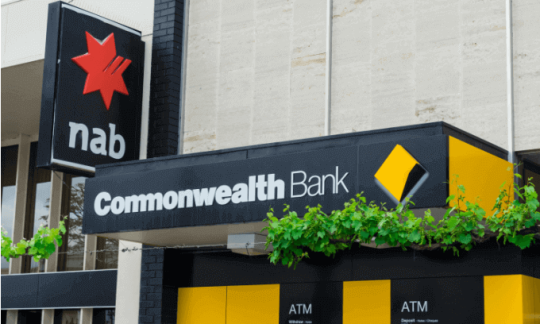Who owns each Australian bank?
Do you know who owns your bank? Several smaller banks are actually owned by bigger banks, meaning you could be banking with one of the big four without knowing.

Do you know who owns your bank? Several smaller banks are actually owned by bigger banks, meaning you could be banking with one of the big four without knowing.
KEY POINTS
- The Australian banking sector is dominated by the ‘big four’ banks – ANZ, CommBank, NAB and Westpac.
- A good way to check the ownership of a bank is to read the bank’s ‘About Us’ or ‘History’ page.
- In general, one bank being owned by another will not impact your day-to-day banking.
What banks are owned by the big four banks?
The Australian banking sector is dominated by the big four banks—ANZ, Commonwealth Bank (also known as Commbank), NAB and Westpac. They account for approximately 74% of home loans in Australia by value, based on the Australian Prudential Regulation Authority (APRA)’s Monthly Authorised Deposit-taking Institution Statistics for May 2025.
Their power in the market is even greater when you consider the smaller banks that they own.
Which banks are owned by ANZ?
- Suncorp
Which banks are owned by CommBank?
- Bankwest,
- a 45% stake in Colonial First State,
- and a 45% stake in Lendi Group.
Which banks are owned by NAB?
- UBank
Which banks are owned by Westpac?
- Bank of Melbourne,
- BankSA,
- St.George,
- home loan provider RAMS,
- and the wealth management brand BT.
What about other banks?
Who owns Bendigo Bank?
Bendigo Bank and Adelaide Bank are owned by the company Bendigo and Adelaide Bank, which was formed by the merger of the two banks in 2007. The company also owns Bendigo Bank Agribusiness (formerly Rural Bank), Community Bank, Up Bank, Alliance Bank and the former Delphi Bank.
Which banks are owned by BOQ?
Bank of Queensland (BOQ) owns Virgin Money Australia and ME Bank. It also owns BOQ Specialist which provides specialist banking services to niche market segments including medical, dental, veterinary and accounting professionals.
If you’re curious about the ownership of another bank, a good way to check this is to read the bank’s ‘About Us’ or ‘History’ page.
The comparison rate for all home loans and loans secured against real property are based on secured credit of $150,000 and a term of 25 years.
^WARNING: This comparison rate is true only for the examples given and may not include all fees and charges. Different terms, fees or other loan amounts might result in a different comparison rate.

Up to $4,000 when you take out a IMB home loan. Minimum loan amounts and LVR restrictions apply. Offer available until further notice. See provider website for full details. Exclusions, terms and conditions apply.
 Owner occupied
Owner occupied
 20% min deposit
20% min deposit
 Redraw facility
Redraw facility
 Owner occupied
Owner occupied
 10% min deposit
10% min deposit
 Redraw facility
Redraw facility
 Owner occupied
Owner occupied
 20% min deposit
20% min deposit
 Redraw facility
Redraw facility
 Owner occupied
Owner occupied
 20% min deposit
20% min deposit
 Redraw facility
Redraw facility
 Owner occupied
Owner occupied
 20% min deposit
20% min deposit
 Redraw facility
Redraw facility
 Owner occupied
Owner occupied
 40% min deposit
40% min deposit
 Redraw facility
Redraw facility
 Owner occupied
Owner occupied
 40% min deposit
40% min deposit
 Redraw facility
Redraw facility
Canstar may earn a fee for referrals from its website tables, and from Sponsorship or Promotion of certain products. Fees payable by product providers for referrals and Sponsorship or Promotion may vary between providers, website position, and revenue model. Sponsorship or Promotion fees may be higher than referral fees. Sponsored or Promoted products are clearly disclosed as such on website pages. They may appear in a number of areas of the website such as in comparison tables, on hub pages and in articles. Sponsored or Promoted products may be displayed in a fixed position in a table, regardless of the product’s rating, price or other attributes. The table position of a Sponsored or Promoted product does not indicate any ranking or rating by Canstar. For more information please see How We Get Paid.
Does it matter if my bank is owned by another bank?
In general, one bank being owned by another will not impact your day-to-day banking. The main issue may come from the Australian Government’s Financial Claims Scheme (FCS).
The FCS protects deposits, such as those in savings accounts, transaction accounts and term deposits, for up to $250,000 per account holder for each licensed authorised deposit-taking institution (ADI). This means if the bank or financial institution you have your money in goes bankrupt, the government would reimburse you up to $250,000 per account holder per ADI. This may present an issue if there are multiple banking businesses under the one licence.
For example, Bankwest and Commonwealth Bank have the same banking licence and Westpac, Bank of Melbourne, BankSA and St.George have the same licence.
So if you had $200,000 in a Westpac account and $200,000 in a St.George account, only $250,000 in total would be covered by the scheme.
Banking businesses under one banking licence
To find out whether your deposits will be covered, you can check APRA’s list of authorised deposit-taking institutions.
This list includes ADIs and their different trading names.
At the time of writing, APRA notes that the following ADIs operate multiple banking businesses under the one banking licence:
Australian Military Bank Ltd
- RSL Money
Auswide Bank Ltd
- Queensland Professional Credit Union Ltd
Bank of Queensland Limited
- BOQ Specialist (BOQS)
- ME Bank
Bendigo and Adelaide Bank Limited
- Adelaide Bank
- Bendigo Bank
- Rural Bank
- Up Bank
Beyond Bank Australia
- AWA Alliance Bank
- Nexus Mutual
BNK Banking Corporation Limited
- Goldfields Money
Commonwealth Bank of Australia
- Bankwest
Community First Credit Union Limited
- Community First Bank
- Easy Street Financial Services
Family First Credit Union Limited
- Family First Bank
Heritage and People’s Choice Limited
- Heritage Bank
- People’s Choice Credit Union
- People First Bank
IMB Ltd (trading as IMB Bank)
- The Shire
National Australia Bank Limited
- UBank
Newcastle Greater Mutual Group Ltd
- Newcastle Permanent
- Greater Bank
Warwick Credit Union
- Dalby Credit Union
- Gympie Credit Union
WAW Credit Union Co-operative LImited
- BankWAW
Westpac Banking Corporation
- Bank of Melbourne
- BankSA.
- St.George Bank
Source: APRA (04 June 2025)
Note that in some cases, a bank may hold its own ADI licence in addition to that of its parent company. For example, Suncorp bank (owned by ANZ) holds its own ADI licence, which was obtained before being acquired by its current owner.
Cover image source: Nils Versemann/Shutterstock.com
This article was reviewed by our Content Editor Alasdair Duncan before it was updated, as part of our fact-checking process.

The comparison rate for all home loans and loans secured against real property are based on secured credit of $150,000 and a term of 25 years.
^WARNING: This comparison rate is true only for the examples given and may not include all fees and charges. Different terms, fees or other loan amounts might result in a different comparison rate.
 Owner occupied
Owner occupied
 20% min deposit
20% min deposit
 Redraw facility
Redraw facility
Try our Home Loans comparison tool to instantly compare Canstar expert rated options.
The comparison rate for all home loans and loans secured against real property are based on secured credit of $150,000 and a term of 25 years.
^WARNING: This comparison rate is true only for the examples given and may not include all fees and charges. Different terms, fees or other loan amounts might result in a different comparison rate.






